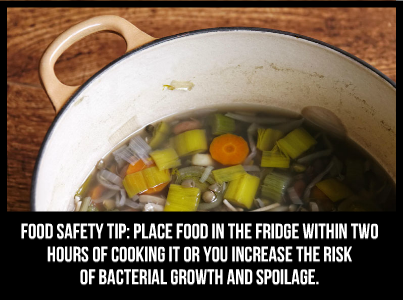Food Storage and Safety at Home

When it comes to keeping your family happy and healthy that doesn’t just include preparing meals at home. There are some safety rules that need to be observed as you cook as well as when you store your foods. Here are some tips on food storage and safety when cooking at home.
Keeping Foods Safe during Prep
The first line of defense against spreading germs is hand washing. No matter what you are working with, always clean your hands between different food types as well as when they are visibly soiled.
Washing your food will also help prevent the spread of germs. Wash fruits, vegetables and meats before preparing them. This removes any dirt and other substances that may have collected on your food between harvesting and shipping to the grocery store. If you are using canned ingredients, always wash the top of the can off under running water before opening it.
When dealing with raw meat, keep juices contained on a cutting board or in the sink. Don’t use any other food in that prep area until it is thoroughly cleaned with soap and hot water. Observe a separation of raw meats and fresh foods in your refrigerator and shopping cart as well. This can help avoid contamination of any kind, especially of foods that don’t need to be cooked.
When cooking your foods, make sure that they stay hot for the required amount of time. For instance, chicken must reach an internal temperature of 165 degrees Fahrenheit before it is considered cooked all the way through. For that reason, preheating your oven is recommended for even cooking. A food thermometer is a good investment to ensure all food is cooked safely.
Storing Food Safely at Home
Do your best to observe the 2-hour rule. Place food in the refrigerator within two hours of cooking it. The longer food sits out, the greater the chance of bacterial growth and spoilage.
When storing your food, use appropriate sized containers. While leaving a space for air, too much space encourages condensation to collect and a layer of water to form on top of your food. That won’t look very appetizing.
When food has sufficiently cooled, move it to the freezer if you want to keep it longer. Label the container with freezing date as well as the name of the item. Use only approved freezer containers to avoid cracking, leaks and freezer burn on your food. Most foods are okay for about three months in a sealed container.
Thaw foods by putting them in the refrigerator. It is not a good idea to simply sit them on the counter. For thawing meats, put them in cold water or use the defrost setting on the microwave if you need them sooner. Remember to clean up any liquid before using your microwave again.
Observing food safety and storage at home can save you money and keep your family healthy.



